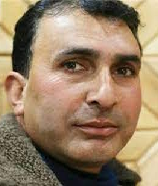All of us seek to see our children doing well in their life and we stay ready to give them the full amount of guidance and motivation. Why so? Needless to say for their welfare and good life. Observing Children’s day undeniably supplies a solid proof about the value children have in our life. But how much aware are we about this special day? Celebrated across on 14 November every year on the birthday of the First Prime Minister of India Pundit Jawaharlal Nehru — known for his fondness of children — the big occasion ostensibly creates awareness about the rights, education and welfare of children.
On this day, many educational and motivational programs for children are held all over India. The government of Jammu and Kashmir deserves appreciation for arranging various activities on the day — educational institutions included. However, there is more than meets the eye about children. The sight of child labor is a painful scenario found more or less around the world; Jammu and Kashmir is no exception. Despite the existence of many strict laws against child labor, the number of children working as laborers in various sectors is a reality across J&K. Though the menace is largely seen as an offence, it seems that we, as one people, are yet not prepared to prevent it in its practical forms.
Hundreds of minor children can be seen doing manual labor in Dhabas, restaurants, railway stations; working as drivers/ conductors and construction workers; pruning apple trees, picking apple fruit , carrying apple boxes and doing other hazardous tasks for —a few rupees. According to the United Nations figures, there are an estimated 152 million children in child labor; 72 million among them are in hazardous work. In the least developed countries, more than one in four children (ages 5-17) are engaged in labor seen as detrimental to their health and development. Africa ranks highest among regions of the number of children in child labor with the figures standing at 72 million. Asia and the pacific ranks second highest – 7% of all children and 62 million in total are in child labor in the region.
Together, Asia, Africa and the Pacific regions contribute nine out of ten children for child labor worldwide. The remaining number is provided by America (11 million), Europe and central Asia (6 million) and the Arab states (1 million). In terms of percentage, 5 % children account for child labor in America, 4 % in Europe and Central Asia and 3 % in the Arab states. The 2011 census counted 250103 child labourers in Jammu and Kashmir. If the study on the number of orphans here involved in menial jobs is not wrong, then 43% of the child population of 26,53,422 i.e., 11,40,971 children are working in J&K which is far more than the figure of 1,75,630 child laborers of census 2001. According to a report on child labor in J&K, there are more than one lakh child laborers here, most of whom work in the handcraft sector, automobile workshops, brick kilns, in agriculture and as domestic servants in homes ; thousands of children here are seen working as vendors, bus conductors and auto drivers.
Arguably, it is extreme poverty— in the majority of cases— which pushes children into the bottomless pit of child labor, eating their health and snatching their right to education. And even if they continue education while working, these children fail to attend schools punctually and regularly. Parents cite various reasons for sending their children for doing labor. The reasons are from poverty, acquisition of skills, lack of quality education down to the inaccessibility of schools.
While these are valid and sound reasons for parents to see their children doing labor when they should be at school, it is noteworthy that the parents cannot scapegoat the education, health and happiness of their children for a few rupees: as parents, it is their duty and moral responsibility to look after their children well and ensure that they do not imprison themselves in illiteracy or miss schooling. Children can be engaged in doing tasks which are not harmful to them but forcing them to do hazardous work at the cost of their physical, mental and moral health is against the principles of child care and human rights. Many child laborers have suffered serious injuries: recently, a minor child laborer fell off an apple tree while picking apples; he broke his left arm and had a serious knee injury. Consequently, he lost both education and days of playing (which is essential for his psychological and physical development).
Though no child would be happy to work as a laborer, it is the abject financial position, backwardness and low educational awareness of people in an area which have pushed children towards labor. Preventing child labor, that is stopping minor children from hazardous work, is possible if both the society and state work together. But if they address it separately, we will end up in chaos. The government can launch child welfare schemes and rehabilitate child laborers; otherwise, the result can prove devastating, considering the fact that the apathy is likely to encourage child labor.
Parents, teachers and preachers can play a key role in stopping child labor; they can take care of a child’s health and education. Turning a blind eye to child labor is an invitation to dark future. We need to water the seeds of brilliance in our children. Let this Children’s day inject commitment and courage in the entire society, enabling us to lift children out of the bottomless pit of labour and exploitation. Or should we just do talk?
(Author is a teacher by profession and RK columnist. He can be reached on: [email protected])








